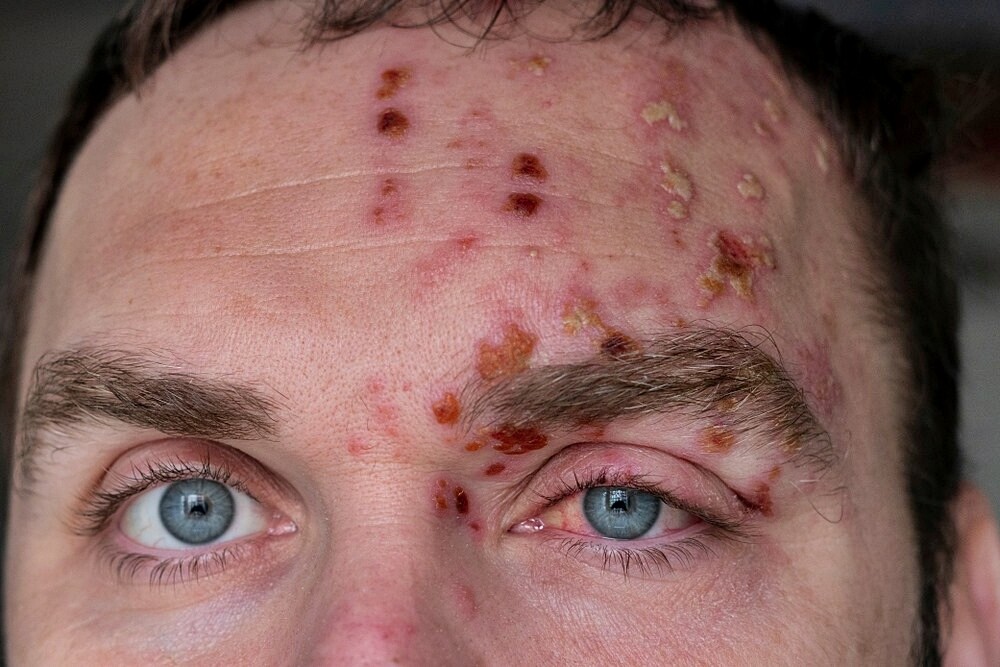Eye herpes is less common than the classic cold sore, but it is also more dangerous. We reveal how the herpes form develops and what helps.
What is eye herpes?
In rare cases, herpes viruses can cause not only lip or nose herpes, but also eye herpes. The viruses enter the sensitive eye through smear or droplet infection via the air. If the problem is not detected in time, the cornea can become inflamed as a result of the infection, leading to scarring. This in turn clouds the cornea and can reduce vision – or even lead to blindness. Unlike other forms of herpes, herpes does not necessarily cause blisters to form on the eye – itching, painful or red eyes are more likely to be symptoms.
As with all forms of herpes, infection with the herpes virus often occurs in childhood. The first outbreak of the disease often causes herpes in the mouth, later on the typical lip herpes develops. Various factors such as stress, hormonal fluctuations, strong sunlight or other existing diseases can promote an outbreak.
Eye herpes: These symptoms are signs
Since the blistering of the eye, which is typical for herpes, occurs rather rarely – if it does, it is more likely to occur on the eyelid – those affected must pay attention to other symptoms. These include:
- Rashes
- Itching
- Foreign body sensation
- Sticky eyes
- Pain
- Increased separation of liquids
- Later in some cases reduced vision
As the symptoms are relatively unspecific, the ophthalmologist should be consulted immediately in the case of such symptoms in order to make the correct diagnosis. If herpes is really present in the eye, prompt treatment is important to prevent permanent loss of vision due to corneal scarring.
Treatment: This really helps
The complaints are treated by certain medications in the form of ointments or eye drops. They inhibit the spread of the viruses and are prescribed by the doctor. You should also be careful not to spread the viruses further. Frequent hand washing (with soap under running water) is a must. Door handles and surfaces that are often touched by several people should be cleaned regularly with disinfectant. And the person concerned should use their own towels, washcloths and similar textiles, which should be washed at at least 60 degrees once the symptoms have subsided.

